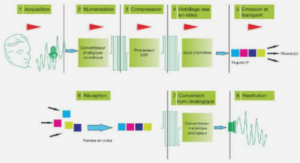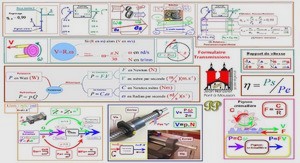Étude des préférences alimentaires des chèvres en termes de postures d’alimentation et de types d’aliment
Animals, housing, and diet
Sixteen female (nonlactating, nonpregnant), disbudded Saanen cross goats (four to six years old; mean (± SD) body weight: 75 ± 10.6 kg) were enrolled from a herd of 26 animals. Prior to the beginning of the study, the goats were on pasture 24 h/day, with access to a shelter. Eight days prior to the beginning of testing, goats were habituated to the experimental housing and feeding schedule. At 9:00 h on habituation and testing days, the goats were moved into four adjacent pens (each pen was approximately 18 m2 ), bedded with wood shavings, equipped with a hay rack and with ad libitum access to water. Goats were randomly assigned to testing order, and always kept in the same groups of four, in order of test appearance (i.e., goats 1-4 in pen 1, goats 5-8 in pen 2, etc.). Testing took place between 10:00 and 16:00 h each day. Hay was provided in the pens in sufficient amounts to ensure continuous access during the time spent there, thus reducing the risk that testing was impacted by hunger. Upon completion of testing, goats were moved onto pasture with the rest of the experimental herd for the rest of the day. Minimal pasture availability due to dry summer conditions resulted in the herd being contained overnight (beginning at 16:30 h) in an area of approximately 148 m² with a covered shelter of 52 m² and provided with approximately 0.7 kg/goat of meadow hay (comprised of ryegrass and white clover) in a bale-sized hay rack. 2. Experimental design and test procedure The testing arena (W: 3.6 m, L: 4.8 m, H: 1.8 m) had solid plywood walls, and a concrete floor that was partially covered by plywood (4.0 m x 1.2 m) in the area directly in front of the feeders (Figure 1). For each test, a goat was led into a corridor (W: 0.35 m, L: 1.4 m, H: 1.8 m), where it waited 30 s between two closed doors, before being given access to the testing arena. The long wall of the testing arena was configured to allow for the two feeder types to be independently opened and closed on each side. Chapitre 3 (Article 1) – Préférences alimentaires 97 Figure 2. Layout of the testing arena with solid plywood walls and a concrete floor that was partially covered by plywood directly in front of the feeders. It contained two feeders opened per test (one elevated-feeder accessible by a step, one floor-level feeder). Both feeders were plywood boxes with a plate of acrylic glass at the end, but in the elevated feeder the bottom was angled at 45°. For each test, the combination of feed type (poplar leaves or mixed cut grass) and feeder position (elevated feeder and floor-level feeder) was changed for each goat. The step was covered with a mesh to prevent slipping. Two feed types were used in the tests: freshly cut, mixed cut grass (MIX) and poplar leaves (POP: Populus deltoids x Populus nigra). MIX was cut once a day using an Alp Silver cut front mount mower and a Bergman 28S wagon. In Exp1, due to equipment availability, feed was delivered between 8:30 and 9:30 h; in Exp2 all deliveries were standardized to 9:30 h POP was cut manually using hedge clippers twice a day and delivered at 9:30 and 13:00 h. Both feeds were offered in both experiments. In Exp1, feed was presented in a floor-level feeder (Figure 2A) and in an elevated feeder paired with a step (W: 0.76 m, L: 0.40 m, Figure 2B) on which the goats could only put two front legs. In Exp2, feed was presented in a floor-level feeder (Figure 2A), paired with the same form of feeder accessible via a platform (W: 1.2 m, L: 1.2 m, H: 0.30 m; platform-level feeder, Figure 2C) which the goats could stand on with all four legs. Chapitre 3 (Article 1) – Préférences alimentaires 98 Figure 3. Detailed graphics of the three types of feeders used. (A) Floor-level feeder: head of the goat lowered during feeding, ground-oriented, to mimic grazing. (B) Elevated feeder: the head and the body of the goat were pointing upwards with two front hooves on a step to mimic browsing. The step was covered with a mesh to prevent slipping. (C) Platform-level feeder was identical to the floorlevel feeder, but accessible by putting all four legs on a platform. Head of the goat lowered during feeding, ground-oriented, to mimic grazing. The platform was covered with a mesh to prevent slipping. Each experiment consisted of a habituation period (four days in Exp1 and two days in Exp2) followed by two periods of four days of testing. To avoid side bias, an 8×8 Latin Square design ensured that each feed and feeder combination was presented on both sides to every goat (Table 1). All tests (including habituation periods) lasted 10 min per goat.
Feeders
Feeders were made up of plywood, with a plate of acrylic glass on one side to allow camera view inside the feeder. The floor-level feeder was accessible via an opening at 0.30 m from the ground which allowed the goat to pass its head through and to eat with the head facing down in a grazing position (Figure 2A). The elevated feeder had an opening (1.03 m from the ground) which allowed the goat to eat with its head angled upward, and a step that was adjusted based on the height of the goat. Using six pilot goats from the main herd to determine optimal posture, two steps were developed. Enrolled goats measuring between 77 and 86 cm at the shoulder were given a 30 cm high step (n = 7), while goats measuring between 88 and 92 cm were given a 25 cm step (n = 9). Due to some slipping noticed on day 3 of the first testing period, mesh (chicken wire, mesh opening 6 mm) was added to all steps. The bottom of the elevated feeder was angled at 45° and the feed was placed on steel mesh, forming a 75° angle with the bottom of the feeder (Figure 2B). To allow for the presentation of all feeder combinations, and to avoid disturbing the goat during testing, sliding doors controlled by technicians on the outside of the pen, made it possible to close Chapitre 3 (Article 1) – Préférences alimentaires 100 the feeders remotely and independently of each other.
Habituation and testing schedule
On the first day of habituation (day -8), pairs of goats were given arena access with the feeders closed. On day -7 and day -6 of habituation, the same pairs were presented with access to either two floor-level or two elevated feeders. Feeder presentation was randomized for each pair of goats. To ensure goats interacted with the feeders, each feeder contained two familiar feeds, which the goats routinely receive in the winter as supplemental feed: 1 kg of alfalfa silage (Equifibre® Lucerne Pro, Dunstan Horse Feeds, Ltd., Hamilton New Zealand) and 160 g of pellets (Fiber Grow, Dunstan Horse Feeds, Ltd., Hamilton New Zealand). Over the four following days, feeders continued to be open in the same manner, except that goats were habituated alone. Feeder presentation (two floor-level or two elevated feeders) was randomized for each goat. On the final day of Exp1 habituation (day – 1), goats were presented with one floor-level and one elevated feeder. Beginning the following day (day 1), an 8×8 Latin square protocol was followed for each goat, presenting treatments as outlined in Table 1. Feeders contained either 2 kg of MIX and/or 1.5 kg of POP; these quantities were defined after testing with five pilot goats from the main herd to ensure both feed types were available ad libitum during the 10 min tests.




